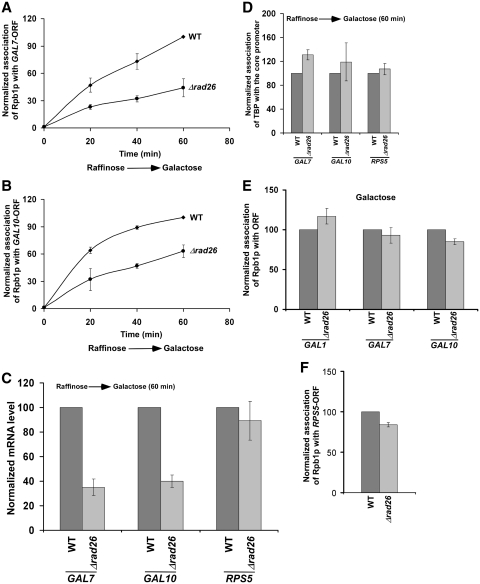Figure 2.
Rad26p promotes the association of RNA polymerase II with the GAL7 and GAL10 coding sequence following transcriptional induction. (A and B) Analysis of Rpb1p association with the GAL7 and GAL10 coding sequences in the Δrad26 strain and its isogenic wild-type equivalent. The yeast strains were grown and cross-linked as in Figure 1B. The specific primer pairs targeted to the GAL7 and GAL10 coding sequences were used for PCR analysis of the immunoprecipitated DNA samples. (C) RT-PCR analysis. Both the wild-type and Δrad26 strains were grown as in Figure 1E. (D) Rad26p does not regulate the recruitment of TBP to the GAL7, GAL10 and RPS5 core promoters. Both the wild-type and Δrad26 strains were grown as in Figure 1E prior to cross-linking. Immunoprecipitation was performed as in Figure 1G. The specific primers targeted to the core promoters were used for PCR analysis of the immunoprecipitated DNA samples. (E) The steady-state levels of RNA polymerase II association with the coding sequences of GAL1, GAL7 and GAL10 are not altered in the absence of Rad26p. Both the wild-type and Δrad26 strains were continuously grown in YPG prior to cross-linking. (F) Rad26p does not alter the association of RNA polymerase II with the coding sequence of a constitutively active gene, RPS5. Yeast strains were grown in YPD up to an OD600 of 1.0 prior to cross-linking. Immunoprecipitated DNA was analyzed by PCR, using the primer pair targeted to the RPS5 coding sequence.

